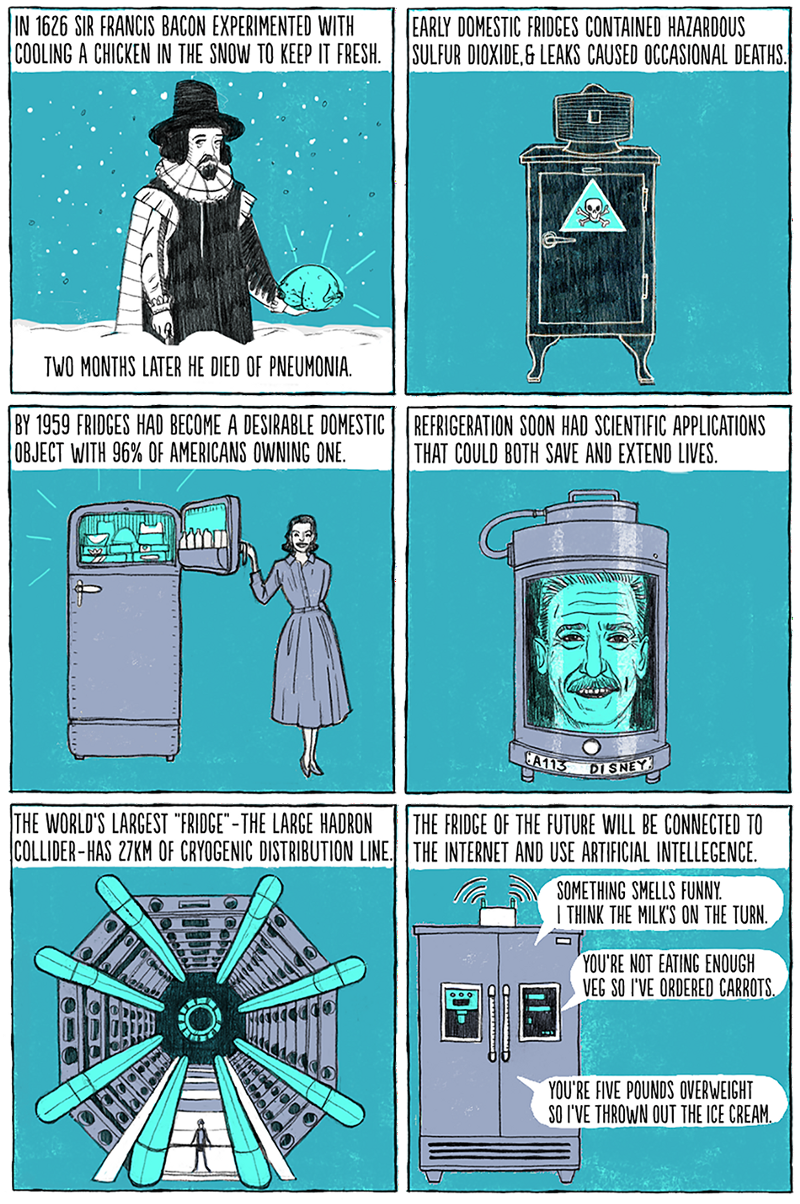

From Francis Bacon’s chicken, to the Large Hadron Collider, to the internet fridge–here’s how we’ve used cold technologies to keep our food fresh, preserve life after death (allegedly, at least), discover the secrets of dark matter and get our domestic appliances to talk to us.



Footnotes
- Panel 1: Francis Bacon may not have caught pneumonia directly from his experiment, but it probably didn’t do him much good.
- Panel 2: Sulfur dioxide in refrigerators was eventually replaced with Freon (which contains CFCs that deplete the ozone layer).
- Panel 3: By contrast, only 13 percent of British households had a fridge by 1959.
- Panel 4: While the cryogenically frozen Walt Disney is an urban myth, there are a few companies that currently offer cryonic (low-temperature) preservation after death.
- Panel 5: The magnets used in the Large Hadron Collider are kept at -271.3 degrees Celsius (or -456.3 degrees Fahrenheit) using liquid nitrogen.
- Panel 6: The first internet-enabled refrigerator went online in 1998, and it’s still running”¦

How We Get To Next was a magazine that explored the future of science, technology, and culture from 2014 to 2019. This article is part of our The Future of Food section, which covers new innovations changing everything from farming to cooking. Click the logo to read more.
